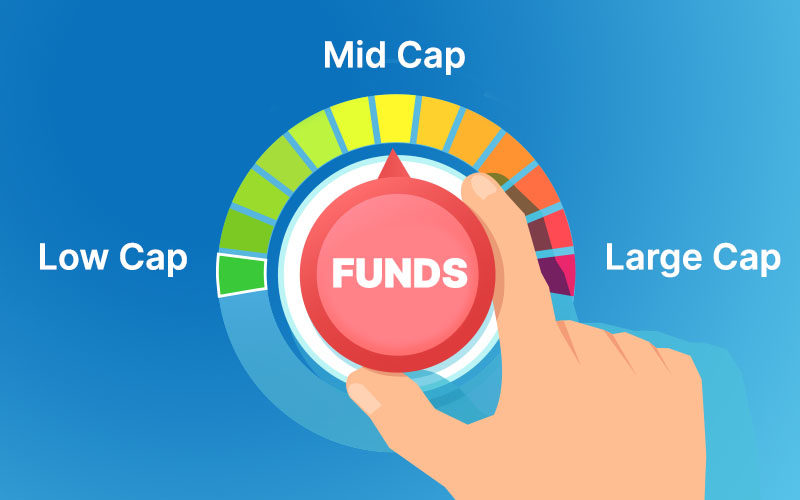Introduction
Investing in mutual funds has become one of the most popular ways to build wealth over time. Among the various types of mutual funds, mid-cap and large-cap funds stand out as two essential categories that cater to different investment needs. While large-cap funds offer stability and consistent returns, mid-cap funds provide the potential for high growth. Understanding the benefits of both these investment options can help investors make informed decisions and create a well-balanced portfolio.
In this article, we will explore why investing in the best mid-cap mutual funds and best large-cap mutual funds is a smart financial strategy. We will discuss their characteristics, advantages, risks, and how they can complement each other in achieving long-term financial goals.
Understanding Mid Cap and Large Cap Mutual Funds
What Are Best Large Cap Mutual Funds?
Best Large cap mutual funds invest in well-established companies with a market capitalization of over ₹20,000 crores. These companies are industry leaders with a long track record of stability, profitability, and consistent growth. Large-cap funds are known for their lower volatility, making them ideal for conservative investors seeking steady returns over time.
What Are Best Mid Cap Mutual Funds?
Best Mid cap mutual funds invest in companies with a market capitalization ranging from ₹5,000 crores to ₹20,000 crores. These companies are in their growth phase and have the potential to become large-cap companies in the future. Mid-cap funds offer higher growth potential compared to large-cap funds but come with higher volatility due to market fluctuations.
Benefits of Investing in Large Cap Mutual Funds
Stability and Low Risk
Large-cap funds invest in companies with strong financial performance and market dominance. These companies are resilient to economic downturns, making large-cap funds a stable investment option even in volatile market conditions.
Consistent Returns
Since large-cap companies have an established market presence, their stocks tend to generate consistent returns over the long term. While they may not provide exponential growth, they offer steady capital appreciation and regular dividends.
Liquidity and Easy Redemption
Large-cap stocks have high liquidity, ensuring that investors can buy or sell their fund units without significant price fluctuations. This makes large-cap funds an excellent choice for those who may need access to their investments in the short or medium term.
Suitable for Long-Term Investment
For investors looking to create wealth over a long period, large-cap funds offer reliable returns with lower risks. These funds are particularly beneficial for retirement planning and wealth preservation.
Benefits of Investing in Mid Cap Mutual Funds
High Growth Potential
Mid-cap companies are in their expansion phase, meaning they have significant growth opportunities. Investing in mid-cap mutual funds can lead to higher capital appreciation compared to large-cap funds.
Diversification in Portfolio
Adding mid-cap funds to an investment portfolio ensures diversification by balancing the stability of large-cap funds with the growth potential of mid-sized companies. This mix helps optimize returns while managing risk.
Beating Inflation
Mid-cap funds tend to outperform large-cap funds during bullish market phases, making them a great option for investors looking to earn inflation-beating returns over time.
Investing in Future Large-Cap Companies
Many large-cap companies today started as mid-cap companies. Investing in well-performing mid-cap funds gives investors the chance to participate in the growth journey of emerging market leaders before they reach large-cap status.
Risks Associated with Large Cap and Mid Cap Funds
Risks in Large Cap Mutual Funds
- Lower Growth Potential: Compared to mid-cap funds, large-cap funds have lower growth potential as their companies are already well-established.
- Market Fluctuations: While large-cap stocks are less volatile, they are still affected by economic downturns and global market changes.
Risks in Mid Cap Mutual Funds
- Higher Volatility: Mid-cap stocks are more sensitive to market fluctuations, leading to higher price swings.
- Longer Recovery Time: During economic downturns, mid-cap stocks take longer to recover compared to large-cap stocks.
- Fund Selection Challenges: Not all mid-cap funds perform well, so investors must research and select funds with a strong track record and experienced fund managers.
How to Choose the Best Mid Cap and Large Cap Mutual Funds
Evaluate Fund Performance
Check the historical performance of the fund over different market cycles. A good fund should have consistent returns over the last 5-10 years.
Analyze the Fund Manager’s Track Record
The expertise of the fund manager plays a crucial role in the fund’s performance. Look for funds managed by experienced professionals with a proven track record.
Consider Expense Ratio
The expense ratio is the cost charged by the fund house for managing the fund. A lower expense ratio ensures that a higher portion of returns goes to the investor.
Review Portfolio Composition
Analyze the companies in which the fund is investing. A well-diversified portfolio with quality stocks ensures better risk management.
Check Risk-Return Profile
Assess your risk tolerance before investing. Large-cap funds suit conservative investors, while mid-cap funds are ideal for those willing to take higher risks for better returns.
Creating a Balanced Investment Portfolio with Mid Cap and Large Cap Funds
A well-balanced portfolio includes both mid-cap and large-cap funds to optimize growth and stability. Here’s how you can allocate your investments:
- For Conservative Investors: Allocate 70-80% in large-cap funds and 20-30% in mid-cap funds.
- For Moderate Risk Investors: Allocate 50-60% in large-cap funds and 40-50% in mid-cap funds.
- For Aggressive Investors: Allocate 30-40% in large-cap funds and 60-70% in mid-cap funds.
This balanced approach ensures steady returns while leveraging the growth potential of mid-cap companies.Additionally, researching the Best Mutual Funds for the Next 10 Years can help investors make informed decisions based on long-term market trends and potential returns.
Conclusion
Investing in the best mid-cap mutual funds and best large-cap mutual funds can help investors achieve their financial goals efficiently. Large-cap funds provide stability, reliability, and steady returns, making them a safe investment option. On the other hand, mid-cap funds offer high growth potential, allowing investors to maximize their wealth over time.
By carefully selecting high-performing funds and maintaining a diversified portfolio, investors can benefit from both stability and growth. Whether you are a conservative investor looking for security or an aggressive investor seeking high returns, a combination of mid-cap and large-cap funds is a smart strategy for long-term wealth creation. Start investing today and take a step toward financial success.



































